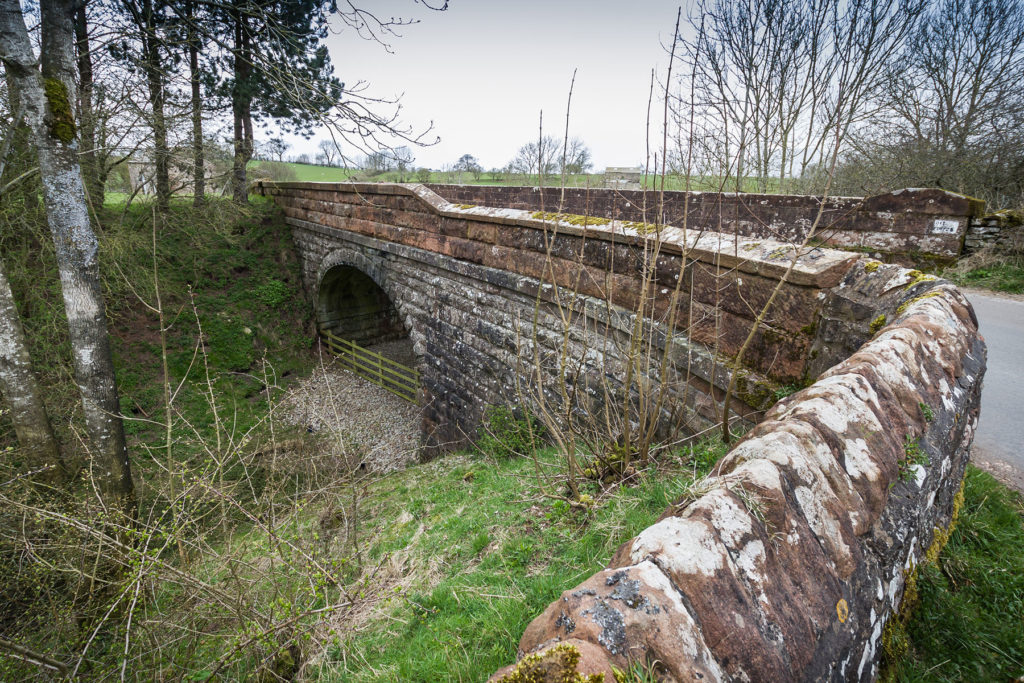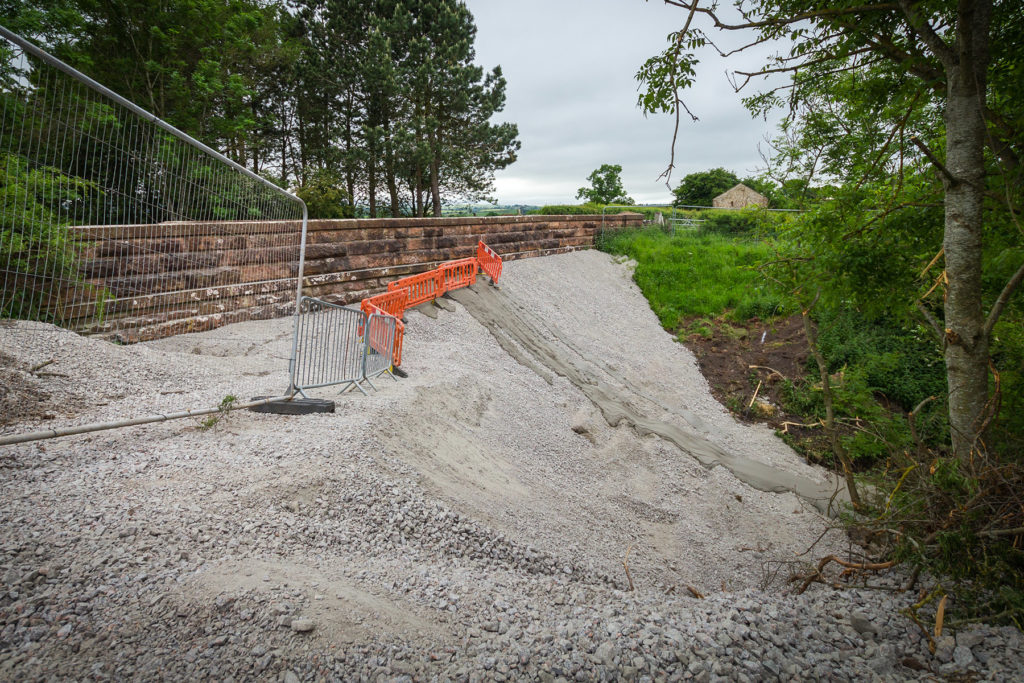Council officials have told Highways England that it must seek retrospective planning permission after infilling a Victorian bridge which two heritage railways need for a connecting line between their operations.
The structure at Great Musgrave in Cumbria is one of 134 disused bridges and tunnels that the state-owned roads company intends to infill or demolish over the next five years as part of a controversial asset management programme.
In May, contractors started burying the Victorian bridge beneath hundreds of tonnes of aggregate and concrete, despite Eden District Council twice asking Highways England to stop the work whilst planning requirements were properly investigated. The company refused, claiming that infilling was urgently needed because the bridge deck might “fall suddenly”. Permitted Development powers were invoked that only apply in emergency situations.
Campaigners pointed out that Highways England’s own inspection reports recorded only minor localised defects. The bridge presented “No significant risk” to public safety, with a “Low” likelihood of any problems occurring and “No action [was] required”, according to the company’s engineer.


Infilling was completed in June, but the council has now stated that “Whilst the provisions [of the Permitted Development powers] allow initial works to be undertaken in connection with an emergency, where such works are intended to be retained, retrospective planning permission must be sought. Highways England have confirmed their intention to make such an application within 12 months of the commencement of the works, as required.”
Mike Thompson, Project Manager for the Stainmore Railway Company, said: “For weeks now, Highways England has been misrepresenting our views – both in the press and to Ministers – on the basis of dialogue which never happened. Their dishonesty has been shocking.
“We’re now delighted to learn that the Council has told them to retrospectively follow due democratic process so this unwarranted scheme can be scrutinised. We look forward – finally – to making our real views on the matter heard loud and clear.”
Meanwhile, Highways England has backed down over the threatened infilling of a bridge in Dumfries & Galloway which spans an old railway being considered for reopening by the Scottish Government.
In April 2020, the company told the local council that infilling the structure at Lochanhead near Dumfries “is considered necessary to prevent further deterioration and remove the risk of future collapse.”
Local residents, councillors and members of a railway campaign group voiced their concerns to the local authority whose planners had authorised the work as “repair”. But, following an intervention from council officers, Highways England has withdrawn the threat of infilling.
In an email, the company’s engineer said that “we can confirm that we are planning to repair the former overbridge – not infill it. We have been in communication with the team carrying out the Strategic Transport Projects Review and are waiting for further information which will inform the nature of the repairs that we take forward.”
Graeme Bickerdike, a member of The HRE Group – an alliance of engineers, sustainable transport advocates and greenway developers – said: “Whilst the apparent reprieve of Lochanhead bridge is very welcome, it serves only to demonstrate the deceit Highways England has been perpetuating for many months about its infilling programme.
“There are no meaningful engineering, public safety or cost grounds for the damage being inflicted on 134 Victorian structures and we share the view of many civil engineers who have expressed embarrassment and shame at Highways England’s vandalism. The company is pursuing a destructive policy in its own narrow interests, without any consideration of the wider social, economic, environmental and heritage consequences.
“These valuable historic assets should never have been placed in Highways England’s hands.”
Photo credits: HRE Group

